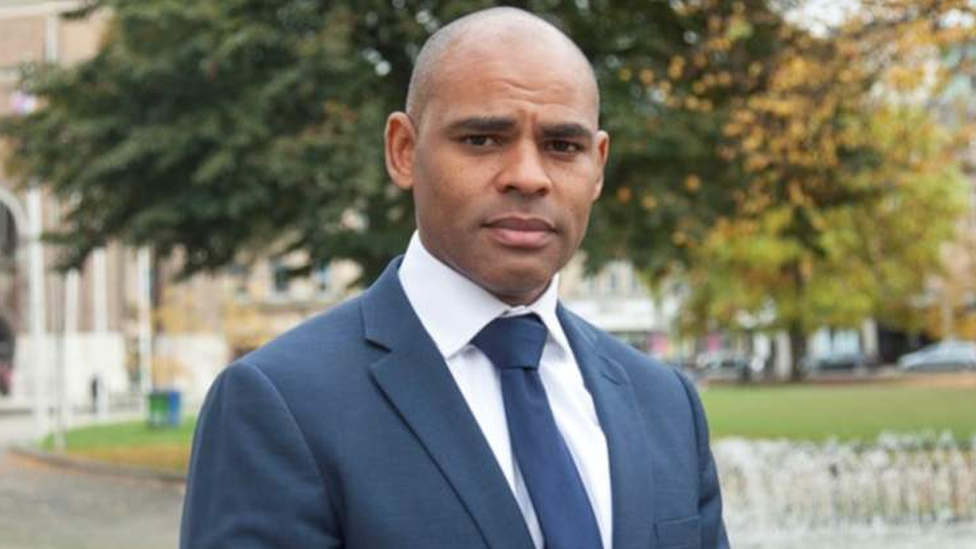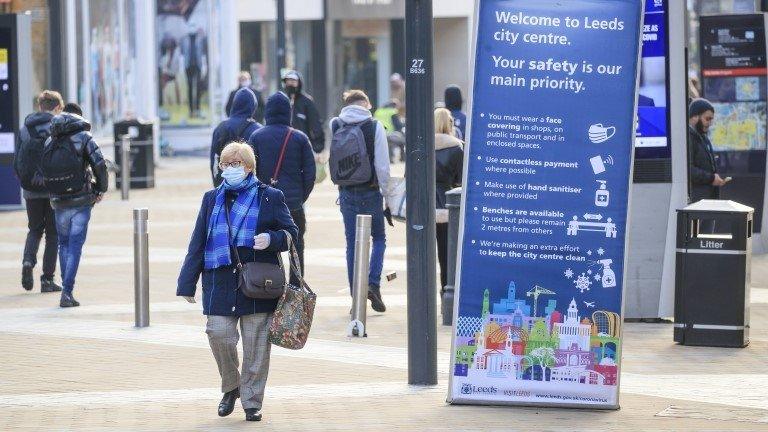Covid-19: Bristol in highest tier of virus restrictions
- Published

Bristol is among the major UK cities to be placed in tier three, along with Newcastle, Manchester and Birmingham
Bristol will be placed under the highest level of coronavirus restrictions when the national lockdown ends next Wednesday.
The government announced on Thursday the city will be included in tier three - very high alert.
South Gloucestershire and North Somerset have also been placed in the highest tier.
The vast majority of the South West, including BANES, Wiltshire and Gloucestershire, will be in tier two.
Also included in tier two are South Somerset, Somerset West and Taunton, Mendip and Sedgemoor.
Cornwall, the Isles of Scilly and the Isle of Wight are the only places in England to be placed in tier one - medium alert.
Differences between the new tiers include restrictions on where households can meet up:
tier one: the rule of six applies everywhere, indoors and out
tier two: the rule of six applies outdoors but there is no household mixing anywhere indoors
tier three: can only meet other households in outdoor public spaces like parks, where the rule of six applies

Bristol mayor Marvin Rees said people will lose businesses and jobs will be on the line the longer the city stayed in tier three
In a written statement explaining the reasons for the allocations, the government said the "overall picture remains concerning, with very high case rates" in Bristol.
It said South Gloucestershire and North Somerset were included as they are "part of a wider travel-to-work area and thus form a natural geographic grouping".
Mayor Marvin Rees asked people in Bristol to work together and follow the guidance in order to move into a lower tier.
"Covid-19 is devastating lives and livelihoods. For every moment we are in tier three, the hospitality sector will be further damaged.
"We know that one of the main reasons for the recent increase in infection rates is because people are going into other people's homes when they shouldn't be.
"We all want to see friends and family, but for now it is really important we protect those we love by not visiting them. The sooner we all do this, the sooner we can get back to some normality."
'Cases risen sharply'
Health Secretary Matt Hancock referred to Bristol in the House of Commons when listing examples of areas where cases had risen sharply.
"The majority of England will be in tier two, but in a significant number of areas I'm afraid (they) need to be in tier three to bring case rates down.
"Now, I know how tough this is, both for areas that have been in restrictions for a long time like Leicester and Greater Manchester, and also for areas where cases have risen sharply like Bristol, the West Midlands and Kent."
Leader of Wiltshire Council Philip Whitehead said it was "disappointing but not surprising" for the county to be placed in tier two.
Gloucestershire's director of public health Sarah Scott said the tier two restrictions would help bring down the number of cases in the county and protect those most at risk.
The system will be regularly reviewed and an area's tier level may change before Christmas - the first review is scheduled for 16 December.
Decisions on tiers are based on factors including case detection rate, how quickly case rates are rising or falling and pressure on the NHS.

LIVE UPDATES: Hancock sets out England's new tier arrangements
EXPLAINED: What are the new rules?
LOOK-UP TOOL: How many cases in your area?
MASS TESTING: Where is it available?


Follow BBC West on Facebook, external, Twitter, external and Instagram, external. Send your story ideas to: bristol@bbc.co.uk , external
- Published26 November 2020
